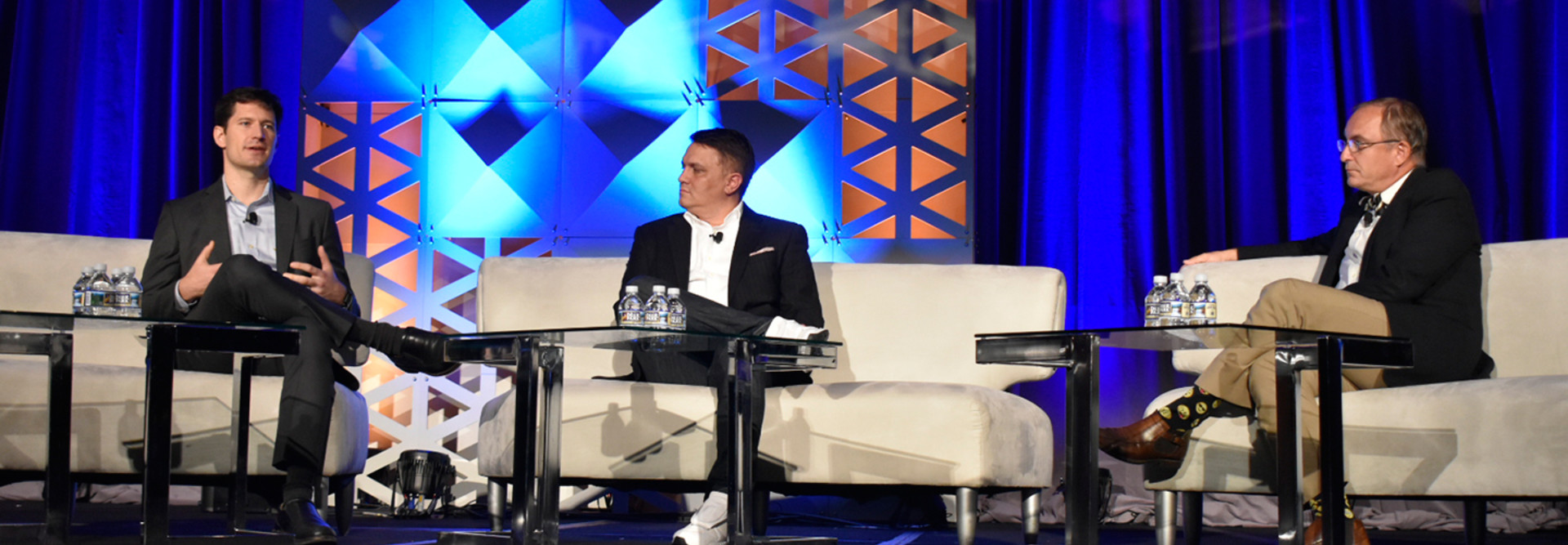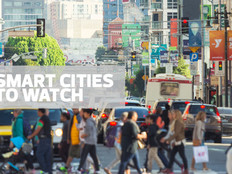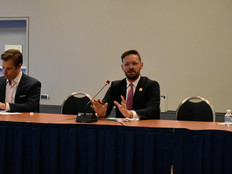Smart Cities Week 2018: Smart Cities Are in the Eye of the Beholder
There are as many ways to pursue smart city concepts as there are cities in the world, but ultimately, city IT leaders should not focus as much on the technology they deploy as the residents they help.
Former smart city leaders delivered that message on Oct. 4 during a keynote session of the Smart Cities Week 2018 conference in Washington, D.C. They said that cities should look to partner with private sector technology companies to spur innovation. They also offered practical advice for how to use tech to improve the lives of residents.
Miguel Gamiño Jr., now the executive vice president for global cities at Mastercard, served as CTO for New York City from 2016 to April 2018. Gamiño also was CIO of San Francisco and chief innovation and information officer for the city of El Paso, Texas.
Working for multiple cities forced Gamiño to learn that every city is different, and while they may face similar problems, they all have different priorities. They also each have different appetites for risks, he said.
“What that taught me very quickly was that becoming smart city wasn’t a destination, it was a journey,” he said. “What makes for a smart city is in the eye of the beholder, in the city itself.”
For example, in El Paso, the city was focused on efficiency in government, minimizing taxpayer expenses and improving service delivery. In San Francisco, the city and IT organization were much larger and more focused on broadband deployment, according to Gamiño.
Michael Mattmiller, a director of government affairs at Microsoft who served as CTO of the city of Seattle from 2014 to 2018, noted that the city’s IT organization wasn’t focused simply on how to deploy hyperconverged infrastructure in its data centers. “We were trying to affect citizen services” and improve them, he said.
JOIN THE CONVERSATION: Follow @StateTech on Twitter for continued Smart Cities Week 2018 coverage!
Partnerships Are Essential for Smart Cities
Mattmiller noted that during his tenure he had strong support from Seattle’s mayor at the time, Ed Murray, as well as Scott Kubly, the former head of Seattle’s Department of Transportation.
Cities also had strong support from the Obama administration’s Office of Science and Technology Policy, Mattmiller said, which drew mayor’s attention to next-generation technologies. Obama also pushed for the creation of the MetroLab Network, a network of more that pairs together universities and cities to solve urban problems.
The fact that mayors and university presidents commit to projects gives cover for those projects go move forward and helps IT leaders propose new ideas, according to Mattmiller. It also means that cities can work not just with their regular vendors, but also with researchers and startups to develop innovative technology solutions, he said.
Gamiño discussed NYCx, a program that brings together the private sector and city technology leaders in New York to solve civic challenges. But that approach is different than what worked in El Paso or San Francisco. “Those were each individually successful because they were aimed at different priorities of different cities,” he said.
It is important to think about how private companies can work behind the scenes to drive success and bring new solutions to the table, Mattmiller said. For example, Microsoft is partnering with Chicago to make the city’s technology more accessible and easier to use for people with disabilities or mobility issues.
MORE FROM STATETECH: These eight cities are the smart cities to watch!
Practical Advice for Smart City Leaders
Consumers’ expectations for technology and service are outpacing what the public sector provides every single day, Gamiño said, and the private sector is being responsive to those expectations. For example, ride hailing apps have exploded in demand in recent years. “The government has got to figure out a way to catch up with consumer expectations,” he said.
The challenges cities face are so significant that, even if a city has lots of resources, like New York, “you shouldn’t go it alone,” Gamiño said. Technology solutions will be built better through collaboration with the private sector. “If you’re a city that lacks some of those resources, then collaboration is even more necessary,” he said.
Cities should look to work with the private sector to accelerate progress, Gamiño said, and also need to build on progress other cities have made to try and catch up.
Mattmiller said it’s important to think about not only how technologies need to change but also how city departments and functions need to change. Employees need to be trained to take advantage of new technologies.
For example, he said, if a city deploys sensors at intersections to help cities reduce traffic fatalities as part of Vision Zero initiatives, the equipment may be wonderful and have a 99 percent success rate. However, if city employees do not understand how to aggregate and analyze the data and make decisions based on it, then the smart city project would not be successful. “That starts a downward spiral and decreases trust in new technologies,” Mattmiller cautioned.
Keep this page bookmarked for articles from the event. Follow us on Twitter @StateTech, or the official Smart Cities Week handle, @smartccouncil, and join the conversation using the hashtag #SmartCitiesWeek.









